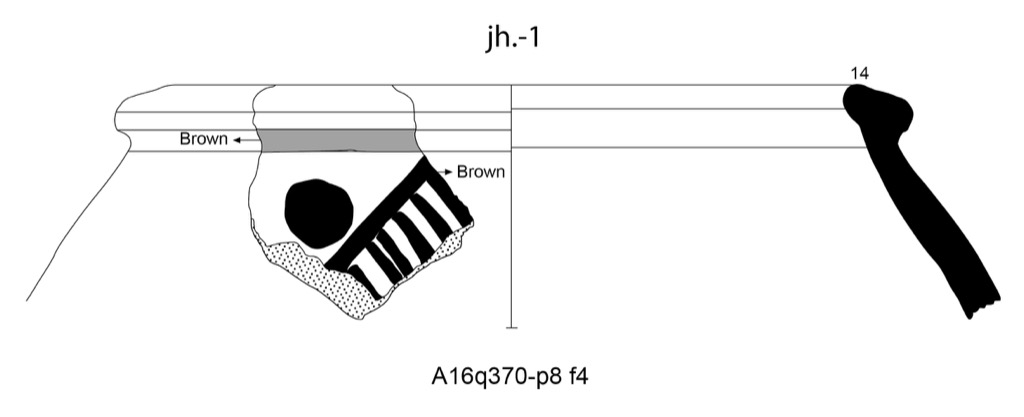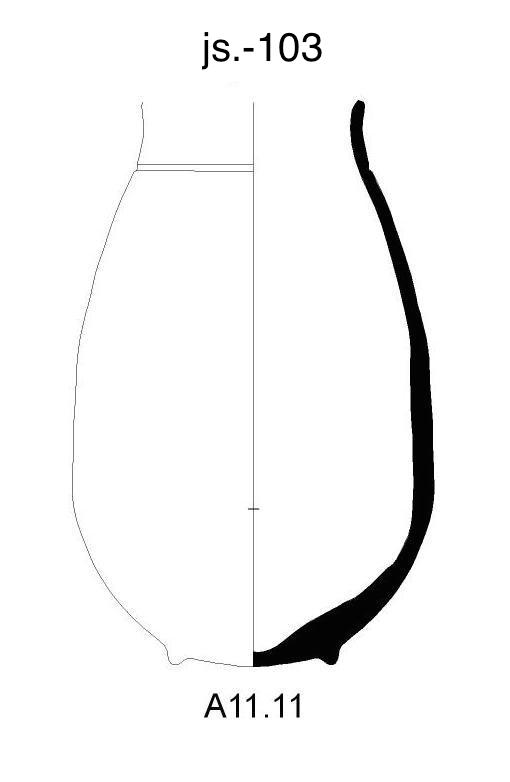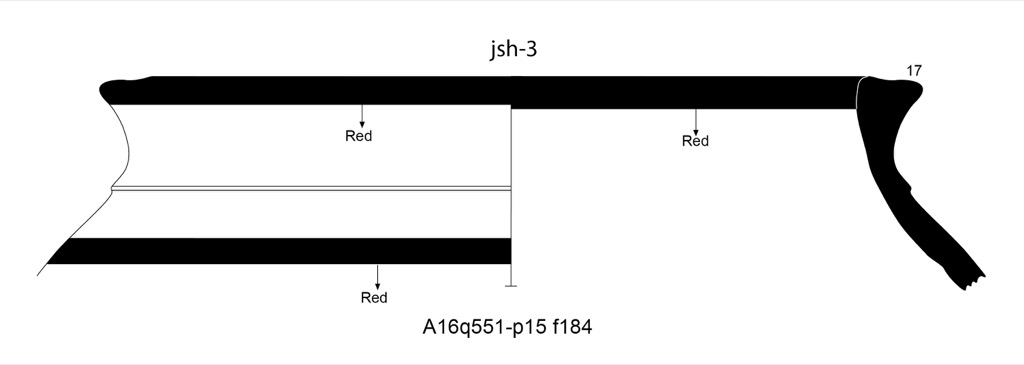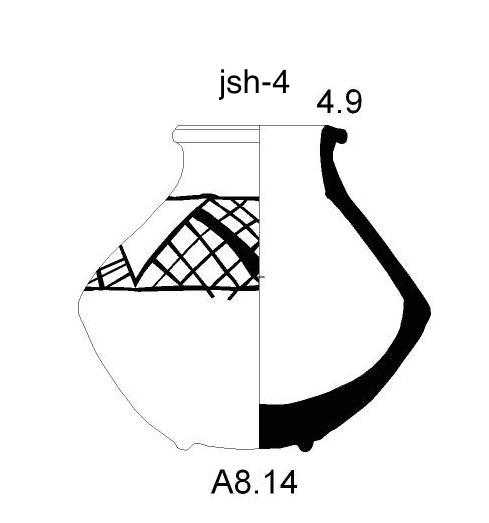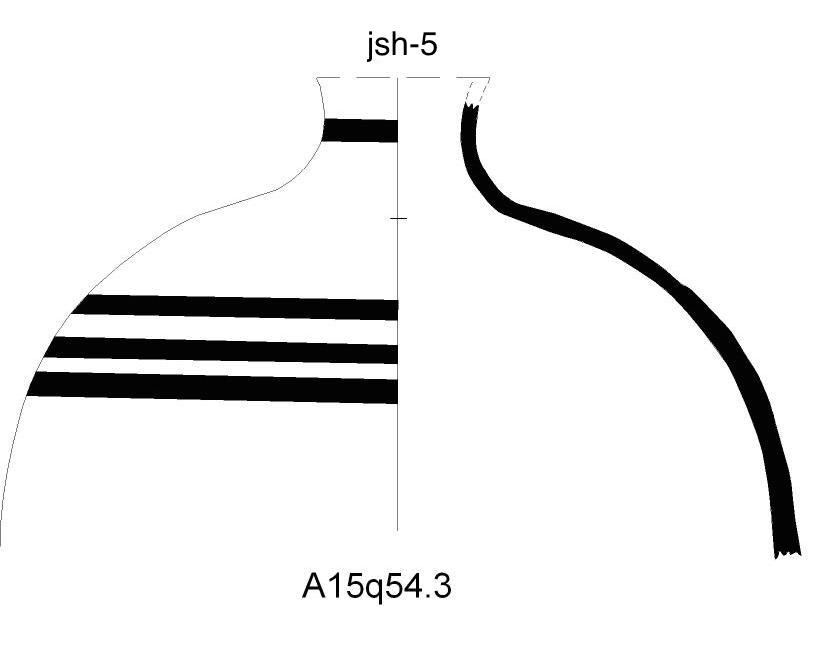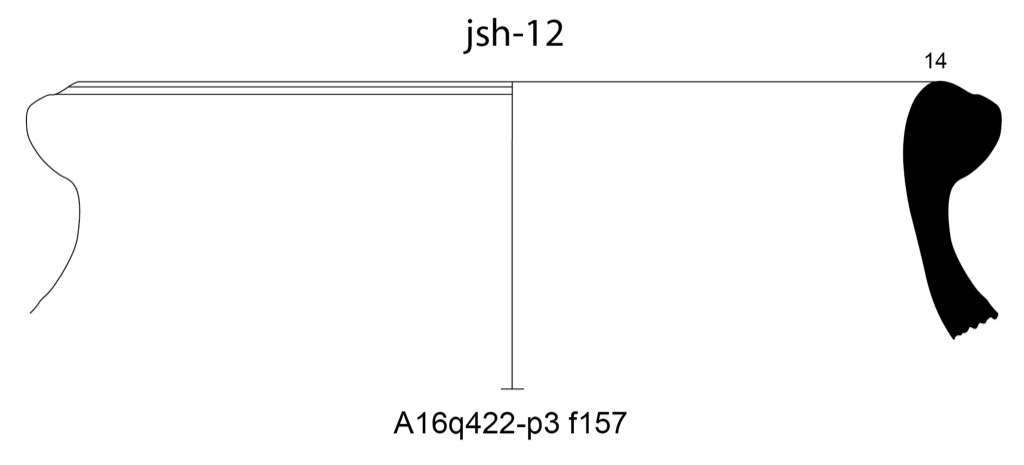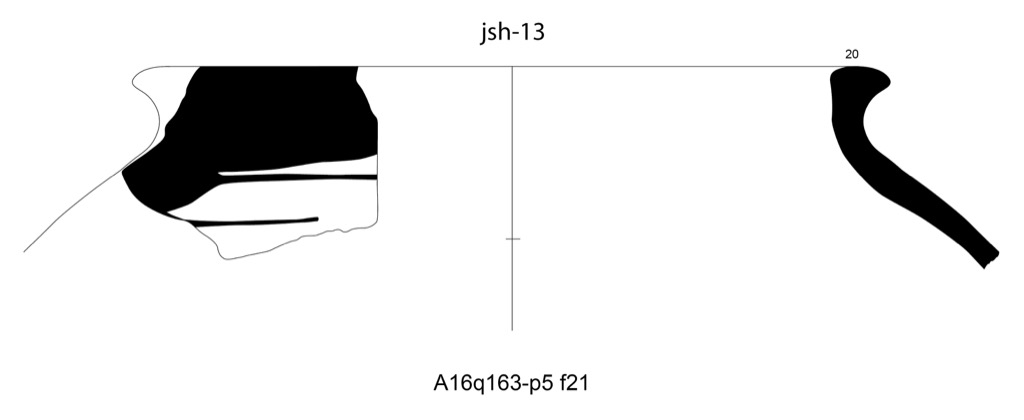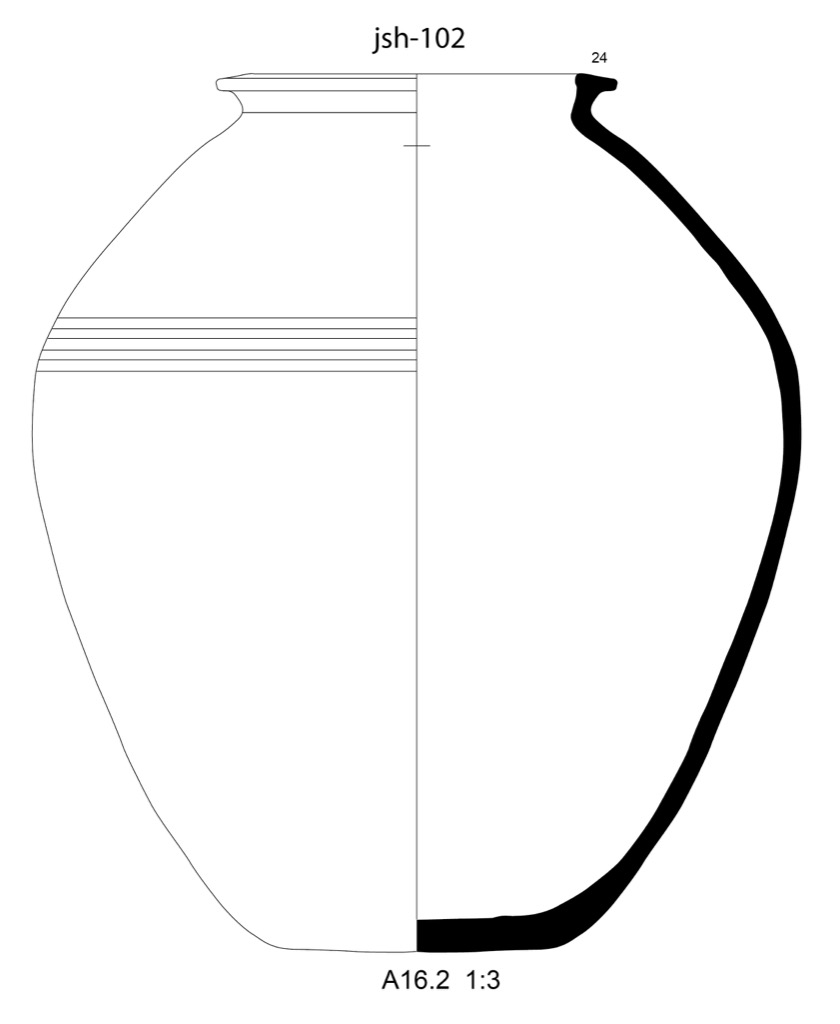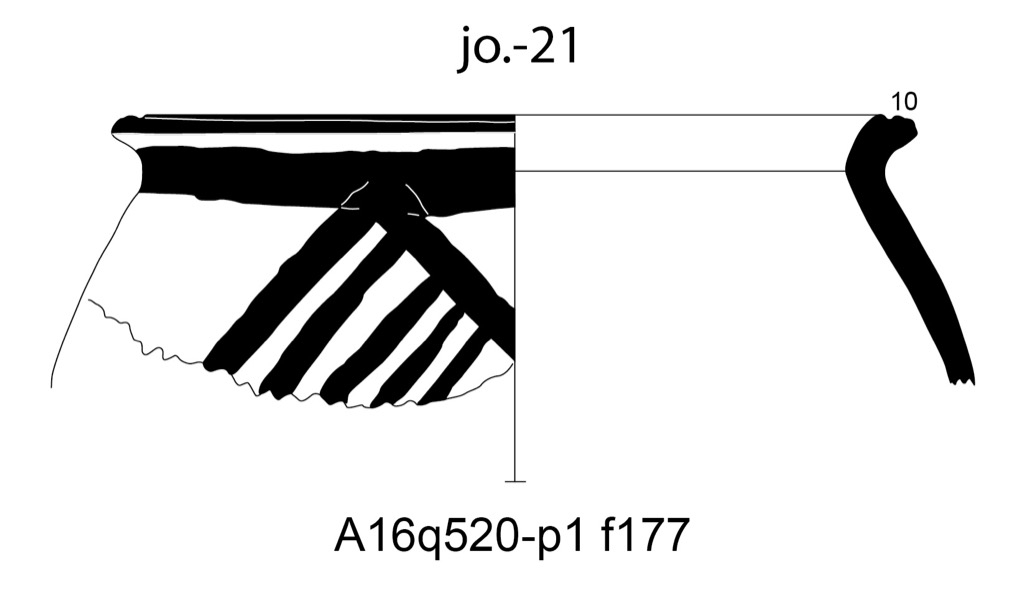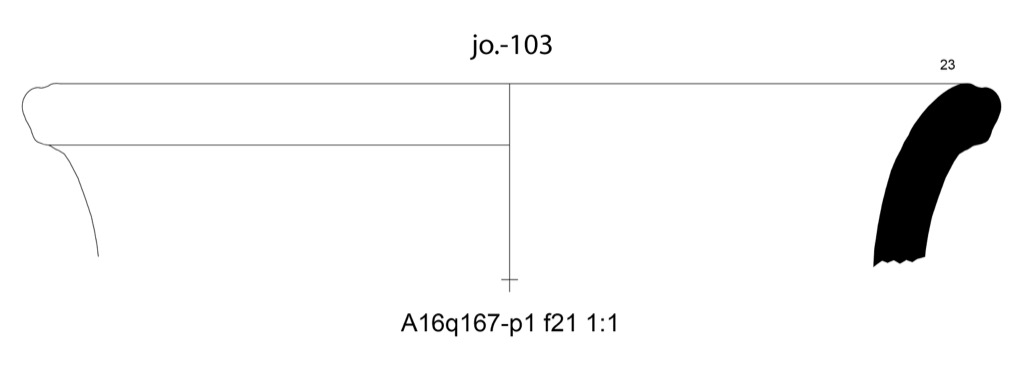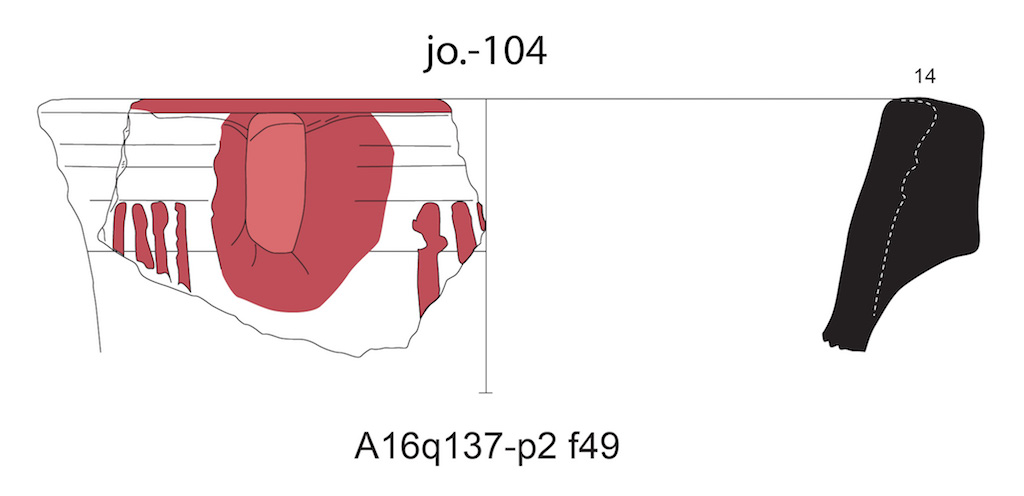Back to top: Jars
Brief Overview
The definition of what is a jar is the same for all units and all time periods in the A11, A13 and A16, some tombs and a number of pottery kilns excavated in A15 (see also Lorenzo Crescioli’s MA thesis). Because of these limited contexts there are relative few Khabur period ceramics found in the excavations. The Plaza context where there was a large amount of Mittani pottery did not contain Khabur ceramics although it did yield ceramics painted in Khabur-type decoration bands which were still being produced in the Mittani period.
Necked jars are the most common jar shapes. Medium necked jars become more frequent, in all likelihood because they were easy to transport even when filled. Hole mouth jar shapes are becoming rarer while shouldered jars were used for large storage jars but were also made in medium shapes.
Jars often have a painted decoration usually placed on the rim and upper body. Parallel lines and running hatched triangles are the prevalent motifs. Necked jars often have solidly painted necks.
Back to top: Jars
Necked Jars
Back to top: Jars
Straight necked jars
| jn.s1 | 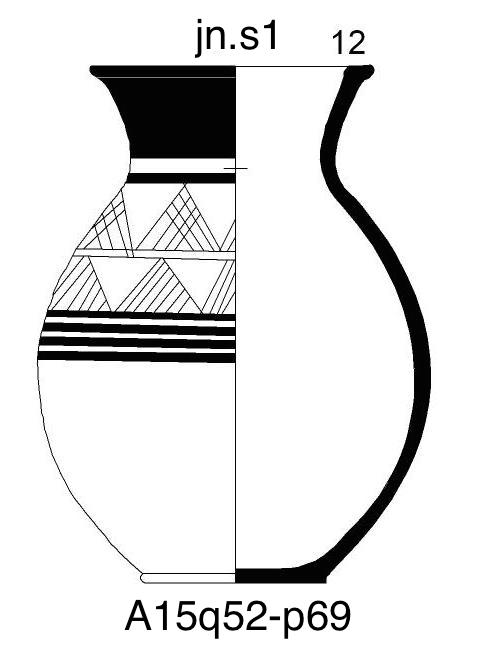
|
| jn.s2 | 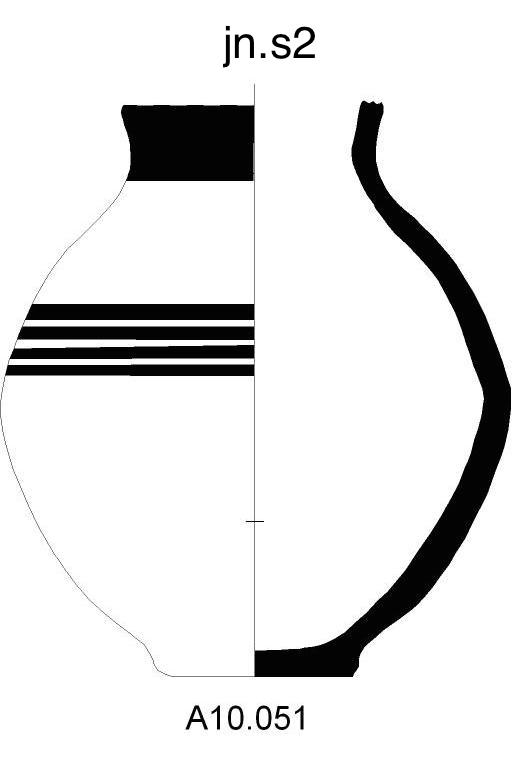
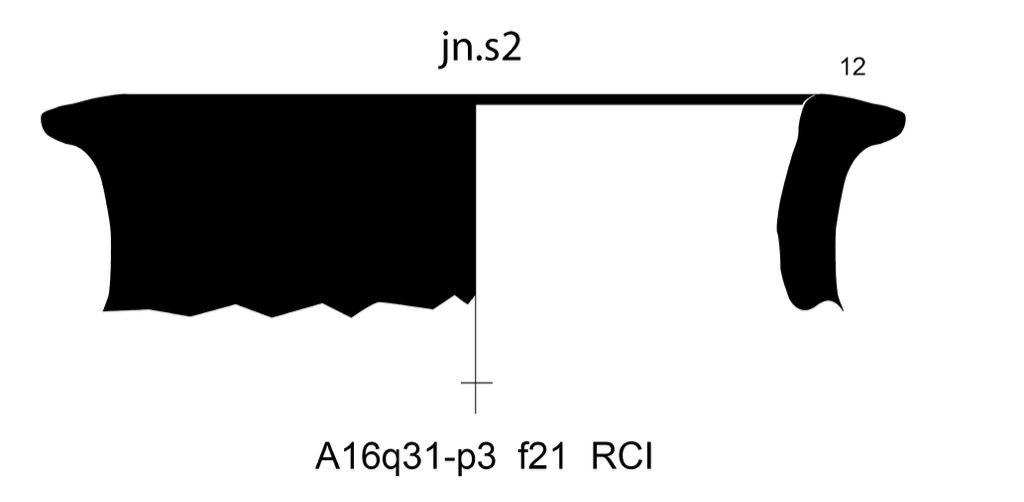
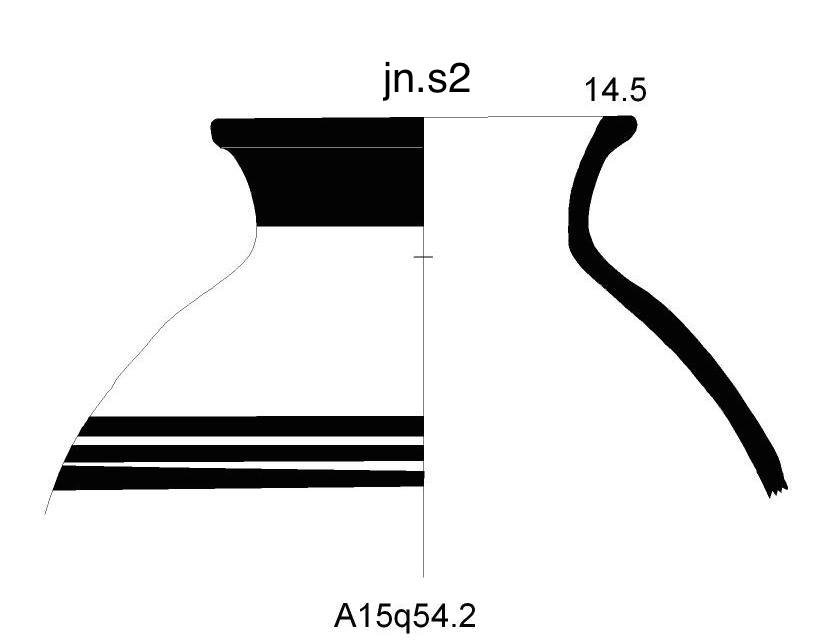
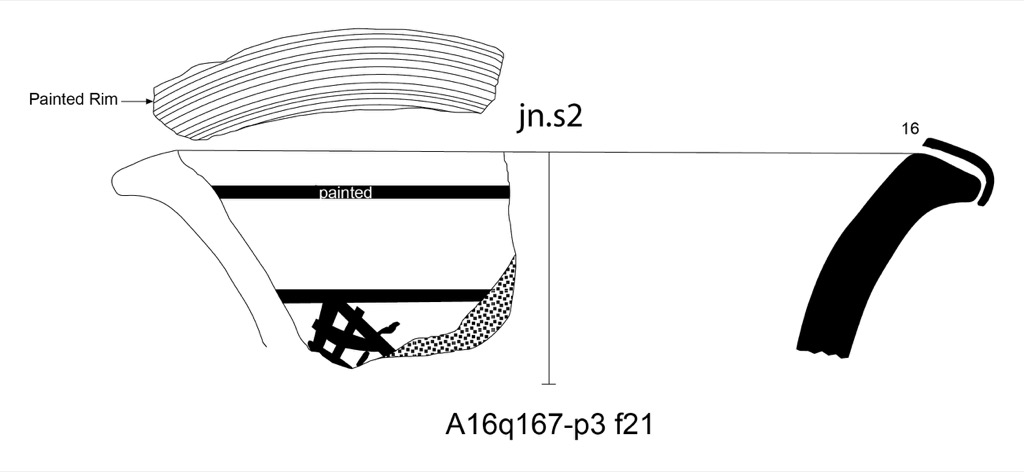 |
Back to top: Jars
Flaring necked jars
| jn.f1 | 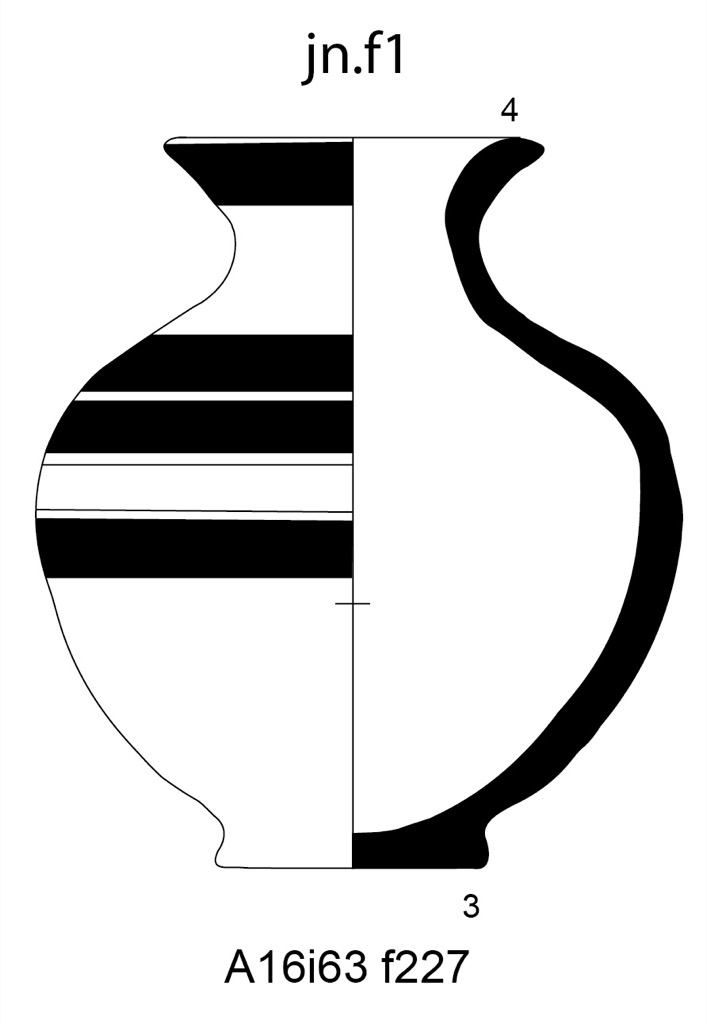
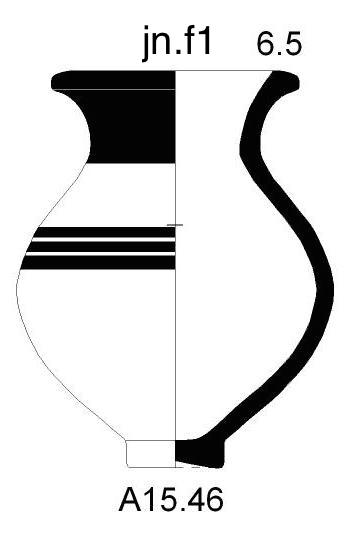
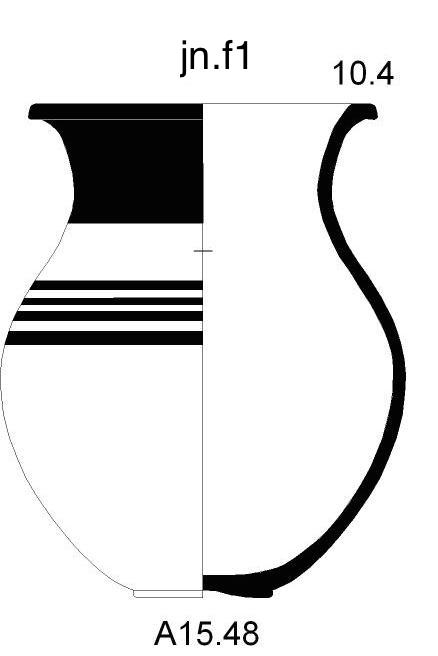
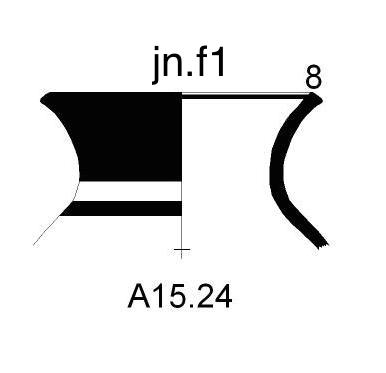
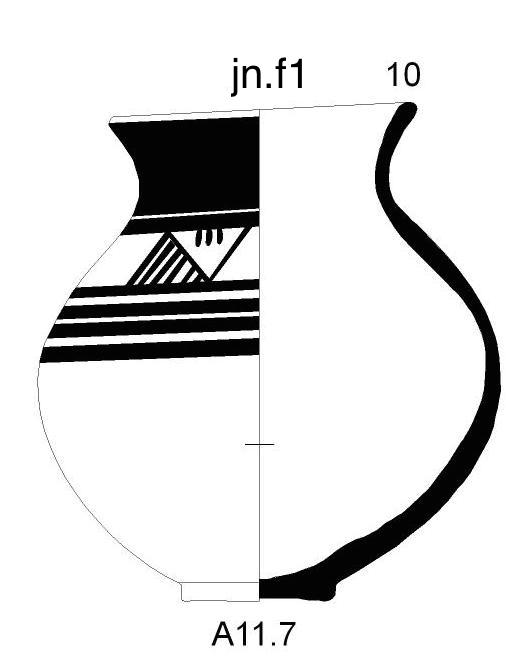
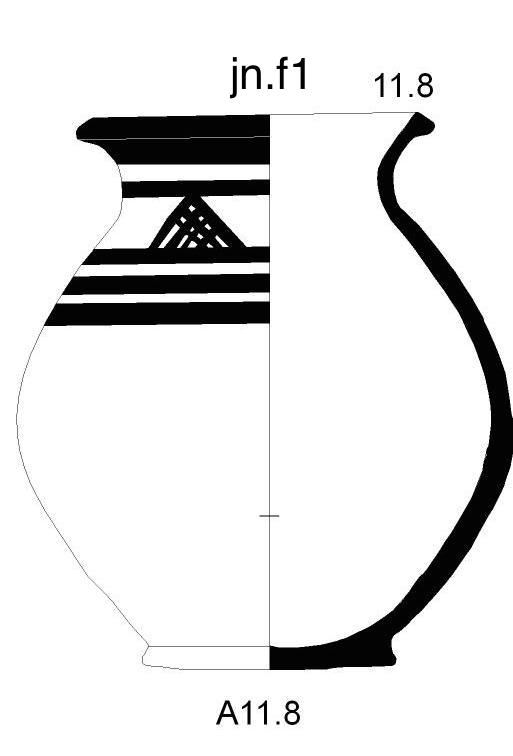
|
| jn.f4 | 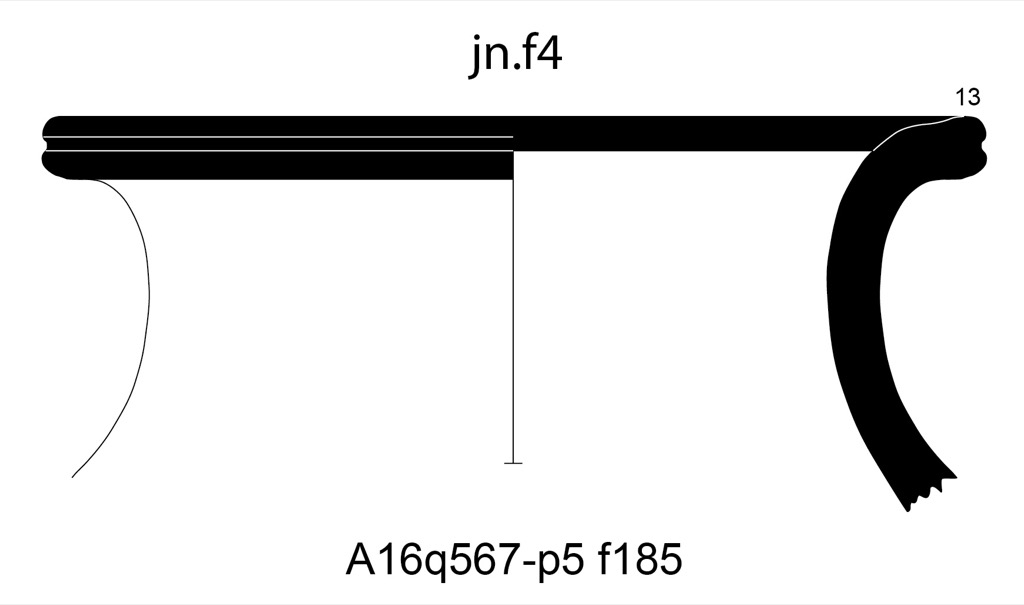
|
Back to top: Jars
